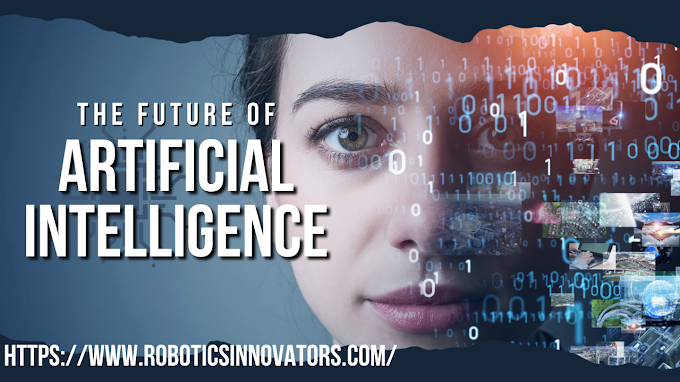The term "Industry 4.0," also known as the "Fourth Industrial Revolution," refers to a new level that has been attained as a result of production and marketing strategies that are focused on speed, efficiency, cost, and innovation, as well as quickly evolving technological possibilities.
With Industry 4.0, it is hoped that all components of the manufacturing process will be able to connect with one another, access big data instantly, and provide outputs that will best satisfy customer expectations. The massive advancements in the digital sphere and the cyber-physical systems they produce, the internet of things, which is made up of billions of devices that can communicate with one another, and the capacity to process big data are some of the dynamics that reveal the concept of Industry 4.0.
The rise of new business models and the creation of new initiatives in response to them is one of the problems anticipated to have an impact on the idea of Industry 4.0. There are several applications, new business sectors, and professions discussed in business life in addition to the traditional methods of conducting business.
THE 2 BEST MATERIALS FOR DIGITAL TRANSFORMATION: ROBOTICS AND ARTIFICIAL INTELLIGENCE
Decision-Making and Artificial Intelligence
By learning from past events, artificial intelligence may contribute to complicated decision-making processes and, by automating decision-making, can make judgments more swiftly and simply. The first artificial intelligence machine will join a board of directors in 2026, according to experts. With artificial intelligence, advancements are anticipated in crucial industries as
WHITE COLLAR JOBS AND AI
Artificial intelligence is useful for many professions in big businesses since it is adept at matching patterns and automating procedures. Many tasks currently carried out by humans will likely be replaced by artificial intelligence in the future. In 2025, it is predicted that 30% of company audits will be carried out by AI. Businesses may expect cost reductions, greater productivity, and new potential for innovation thanks to artificial intelligence technology.THE PRODUCTION SECTOR AND AI
The industrial industry has begun to embrace artificial intelligence, which is one of the best ways to reduce design flaws. Although production faults are unavoidable, eliminating them means avoiding delays in the delivery of the complete order. So, if you're a B2C company hoping for flawless supply chain management, you could want to look at studies on artificial intelligence.The product's quality may also be assessed using artificial intelligence. Small errors cause large-scale chain failures, and in the manufacturing industry, these errors result in delays, setbacks, and dissatisfied customers. Using artificial intelligence algorithms, you may determine your product's market worth after assessing its quality.
Technology based on artificial intelligence may learn about your company and get better. They may be programmed with software and algorithms to manage inventories for you. All of these artificial intelligence subtypes have been differentiated and grouped in accordance with how you need to run your business.
AI can assist you with generative design if you need it.
You can provide your factories with the assistance they require by looking at AI solutions in use.AUTOMATION SERVICES
Many industries, including manufacturing, agriculture, and retail services, are starting to be impacted by robotics. According to the International Robotics Federation, there are approximately 1.1 million active robots in operation worldwide, and machines do 80% of the labor involved in making cars. Supply networks are streamlined by robots toRobotic services are predicted to have a big impact on industries including production, logistics, supply chains, and health.
THE MANUFACTURING INDUSTRY AND ROBOTICS
The size of robotics technology supporting your operations in the industrial business is fairly colorful, similar to artificial intelligence. Robotic technology is advancing daily and is likely to play a role in many industries when combined with artificial intelligence.Many manufacturing industries require extremely heavy metals, minerals, and difficult-to-transport gear. Robotic technology's greatest advantage is that it is the best and most trustworthy technology that can be used in these circumstances. The heavy lifting of your whole manufacturing process may also be transferred to robots using technologies like vision.
force-sensing system. Robotic technologies are unable to function without features like material removal, palletizing and depalletizing, and material handling.
Industry 4.0 and the new technological transformation process it represents present the world with great challenges today. Now, a new era has entered that will affect every aspect of daily life, from production to trade to health to entertainment. This period is unlike anything humanity has experienced before in its scope and complexity. Moreover, the speed and breadth of this new revolution have not yet been fully grasped.
There are opportunities and challenges posed by the connectivity of billions of people and things to mobile devices, the unprecedented amount of processing power, storage capabilities, and information retrieval. The surprising intertwining of new technological breakthroughs in the physical, digital, and biological worlds leads to new leaps.
SMART FACTORIES: ROBOTICS AND ARTIFICIAL INTELLIGENCE COMBINED
robotis-in-manufacturingContrary to common opinion, robotic and artificial intelligence technologies are distinct from one another and may even be created in completely unrelated fields. Let's state the situation simply.
Robotics serves as the body, and artificial intelligence serves as the brain.
Robotics technology instructs a robot to pick up the designated object, drop it at the designated location, and repeat this process again until another instruction is issued. Instead of continuously doing this, artificial intelligence concentrates on finding a solution to the issue.
The body of this technological cluster is robotics. Stages like usage, development, and advancement are where it all begins. The brain is a computer technology in artificial intelligence that focuses on problem solving. The notion of "smart factory" best captures the new industrial age that results from the fusion of the virtual and physical worlds through cyber-physical systems and as a consequence of technological and commercial processes. The "smart factory" is created by integrating cyber-physical systems into industrial processes.
Cyber-physical systems define the resources, tools, and procedures of smart factories. When compared to traditional manufacturing systems, this structure offers substantial advantages in terms of quality, time, resources, and cost. Sustainable and customer-focused business principles are used in the design of smart factories. These applications may be summed up as fault tolerance, risk management, self-adaptation, and learning capabilities.
The smart factory routinely employs a high degree of automation. A virtual network of physically based production systems that largely automates the control of industrial processes makes automation possible. Radical internal production process optimization is made possible by adaptable production systems that can react in almost real-time situations. In addition to being adaptable and tuned for numerous operators, generation advantages are not just confined to one-time generation situations.
Find the technology that is most appropriate for you and optimize your operations.
artificial-intelligence
Robotic systems or artificial intelligence algorithms that are based on routing can carry your heavy manufacturing items for you. The most crucial factor in this situation is that the technology you pick is in the position of a technology that has advanced recently but is still in the early stages of development.
You may open doors that will help your business and industry in the future by integrating these technologies into your operations as well as investing in new IoT-based solutions.








.jpg)




